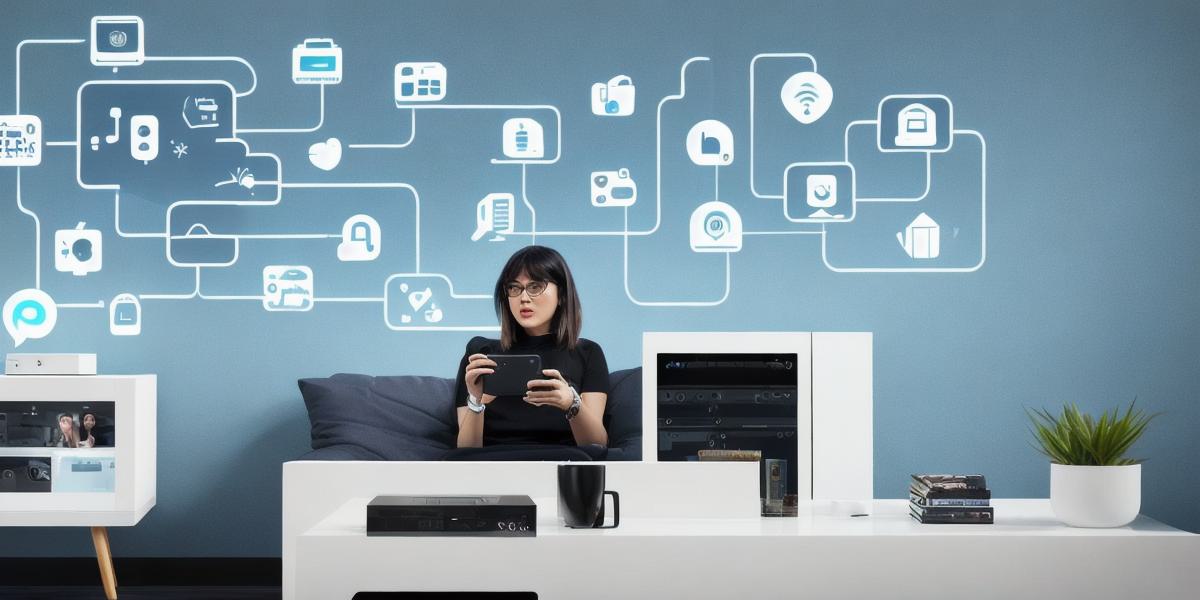Voice Control: Is AI Behind It?

As we continue to see the advancements in technology, it’s no surprise that voice control is becoming more prevalent in our daily lives. From Siri on iPhones to Alexa on Amazon devices and Google Assistant on Android devices, it seems like we can do anything with just our voices. But are we using AI or just talking to a computer program?
Understanding the Basics of Voice Control
Voice control is essentially a way for computers to interpret and respond to spoken commands. This technology has been around for decades, but it’s only recently that we’ve seen it become so prevalent in our homes and on our devices.
There are many different ways that voice control works, but the basic principle is the same: the computer program listens to what you’re saying and then tries to interpret your commands based on a set of rules. This can be anything from simple commands like "play music" or "set reminders" to more complex tasks like "turn off all the lights in my house."
Real-Life Examples of Voice Control in Action
One of the best examples of voice control in action is Siri on iPhones. Siri uses a combination of natural language processing (NLP) and machine learning algorithms to understand what you’re saying and respond accordingly. For example, if you say "What’s the weather like tomorrow?" Siri will use its NLP skills to interpret your command and then use machine learning to find the most relevant answer based on your location and other factors.
Another great example is Google Assistant, which uses a similar approach to understand and respond to voice commands. Google Assistant also uses machine learning algorithms to personalize its responses based on your search history and other data points. For example, if you say "What’s the best restaurant near me?" Google Assistant will use its knowledge of your location and previous searches to find the most relevant result for you.
Is AI Really Behind Voice Control?
While it’s true that voice control technology uses AI to interpret and respond to voice commands, the level of intelligence behind these systems is still relatively limited. Voice control systems rely on a combination of NLP algorithms and machine learning models to understand what you’re saying, but they are not truly AI in the way we think of it.
For example, while a voice control system might be able to understand complex sentences like "What’s the weather like tomorrow?" it’s still limited by its ability to interpret the context of the sentence. It doesn’t have a true understanding of what the weather is or how it affects your life.
Expert Opinions on Voice Control and AI
Despite the limitations of current voice control systems, experts believe that this technology has the potential to be truly revolutionary in the future. "Voice control is one of the most exciting developments in artificial intelligence today," says Dr. Geoffrey Hinton, a leading AI researcher at the University of Toronto. "It’s just the beginning of what we can achieve with natural language processing and machine learning."
FAQs on Voice Control and AI
What is the main idea behind voice control technology?
Voice control technology uses computer programs to interpret and respond to spoken commands.
How does voice control work?
Voice control works by listening to what you’re saying and then trying to interpret your commands based on a set of rules.
Is AI really behind voice control?
While voice control systems use AI to interpret and respond to voice commands, the level of intelligence behind these systems is still relatively limited.
What are some real-life examples of voice control in action?
Some real-life examples of voice control in action include Siri on iPhones and Google Assistant.








